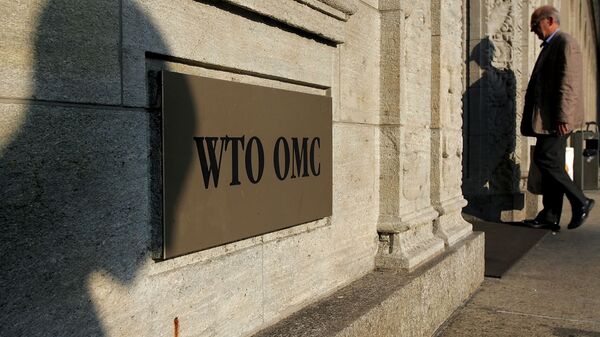New Delhi (Sputnik) — The Indian government is considering various alternatives, including approaching the World Trade Organisation (WTO) to lodge a dispute against the Trump administration, which has given a 60-day notice to India on the termination of the Generalised System of Preferences (GSP).
After consulting with various departments in the wake of the Trump administration's decision, the Indian government has come to the conclusion that it must raise its concern at the appropriate forum as there is very marginal scope within the government to sort out differences over the issues, government sources told Sputnik.
READ MORE: MPs on US Duty Free Status Termination: Turkey to Switch to Alternative Markets
The Indian exporters have also discussed the issue with the government and found it inappropriate on the part of the US to link the GSP with market access and tariff reduction, which is against the basic tenets of GSP.
"India was getting tariff preference on 5,111 tariff lines out of 18,770 tariff lines in the US. However, on only 2,165 tariff lines, the tariff advantage was 4% or more. While we hope that the exporters would be able to absorb the duty loss where it is 2-3%, we need to provide fiscal support to those products where the GSP tariff advantage was significant, particularly in the labour-intensive sector," Ganesh Kumar Gupta, President, Federation of Indian Export Organisations said.
India and the US have been engaged in a bitter policy dispute, as President Donald Trump keeps accusing New Delhi of using an irrational tariff structure on American goods.
Last year, the US had imposed an increased tariff on steel and aluminium imports, adversely impacting Indian exporters. Meanwhile, India postponed proposed retaliatory tariffs on 29 American —made goods- the sixth time in January this year- hoping to reach a consensus with the United States in near future.
READ MORE: It's Aggressive Game That Trump Is Playing — Head of Financial Markets Research
"The government will internally review the retaliatory tariff issue now," Anup Wadhawan, India's topmost official in trade ministry said on Tuesday.
If India implements the retaliatory tariffs on 29 American imports, it will definitely make an impact on bilateral trade, which grew 16.7 percent between December 2017 and November 2018, with U.S. exports to India growing 27 percent during the same timeframe.
In 2003, India had won a case in the WTO against the European Commission following its denial of GSP incentives for textiles and drugs exporters.




